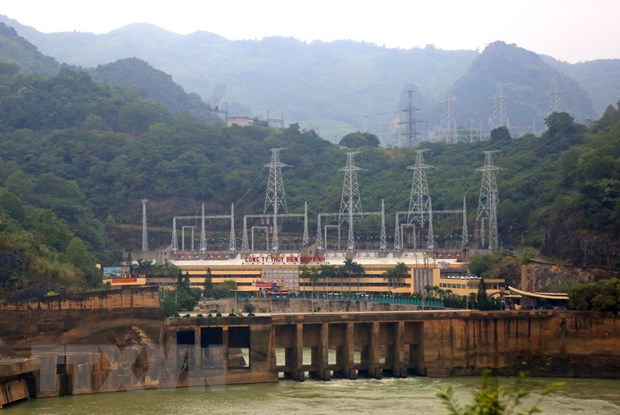 Environment
Environment


|
| The Hoà Bình Hydropower reservoir is suffering lowest water level during 30 years of operation. This would badly affect to the electric generation plans in late months this year. — VNA/VNS Photo Ngọc Hà |
HÀ NỘI — Lower water level in Hoà Bình Hydropower reservoir in the dry season is set to impact electricity generation and water storage for the months to come, said the State-owned Việt Nam Electricity (EVN).
EVN has asked the Hoà Bình Hydropower Plant to ensure water supply for its downstream region, including Hà Nội.
Earlier this week, the water level in Hoà Bình reservoir was at 106.7m, a full 10.3m lower than the designed capacity, meaning the reservoir was lacking about 2 billion cu.m of water.
The low level water was brought on due to severe drought.
“As of September 30, the water level in Hoà Bình reservoir was only 32.75 billion cu.m, as compared to 51.92 billion cu.me of the same period last year," Nguyễn Văn Minh, director of the Hoà Bình Hydropower Plant told Vietnam News Agency.
“The water flows to the Hoà Bình reservoir in this flooding season were the lowest in the 30 years since the plant was put into operation.
“The lower water level will affect plans of electric generation of the EVN and Hoà Bình Hydropower Company,” Minh said.
The Hoà Bình Hydropower Company could not reach its target of electric output of 9.575 billion of kWh this year, he added.
According to Vũ Xuân Khu, vice director of the National Electricity Moderation Centre, under regulations of reservoir operation on the Hồng River basin, Hoà Bình reservoir, after September 15, had to store enough water to supply water for downstream areas in the dry season.
However, due to the impacts of climate changes, the water flowing to reservoirs on the Hồng River basin in the flooding season was only 51 per cent compared to the average levels of previous years, said Anh.
“With such a lower water level, to ensure water supply for agricultural production for the northern delta region and electric generation plan of next year’s dry season, the Hoà Bình Hydropower Plan should have decreased the use of water for electric generation, even gradually restored water to ensure the necessary level by the end of this year in accordance with the operation process,” said Khu.
“Under technical requirements, the water flowing downstream should have been at 300cu.m per second.
“However, the EVN was asked to discharge water at 850cu.m per second to ensure the Đà River Water Plant had sufficient clean water to supply to Hà Nội’s people,” he explained.
Meteorological agencies have forecast that a drought would occurred in the last months of this year, making it impossible to meet the water storage goals of reservoirs in the Đà River basin.
Based on the EVN’s calculation, if the water flow to reservoirs in Hồng River basin was same as present, along with maintaining minimum discharge as regulations and supplying water to the Đà River Water Plant, the total volume of water storage in reservoirs might be much lower than the current level by the end this year.
The EVN has asked the Ministry of Natural Resources and Environment to lower the water discharge volume to downstream areas in November, December and the early months of next year.
The corporation has also requested the Ministry of Agriculture and Rural Development have measures for water storage for the next rice crop in anticipation of minimal water discharge from Hoà Bình, Tuyên Quang and Thác Bà reservoirs.
The corporation also advised pumping water from the Hồng River as a substitute source. — VNS




